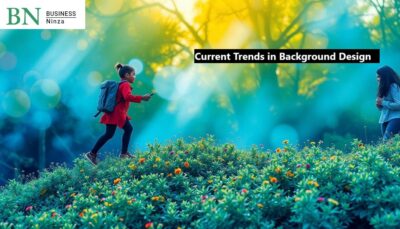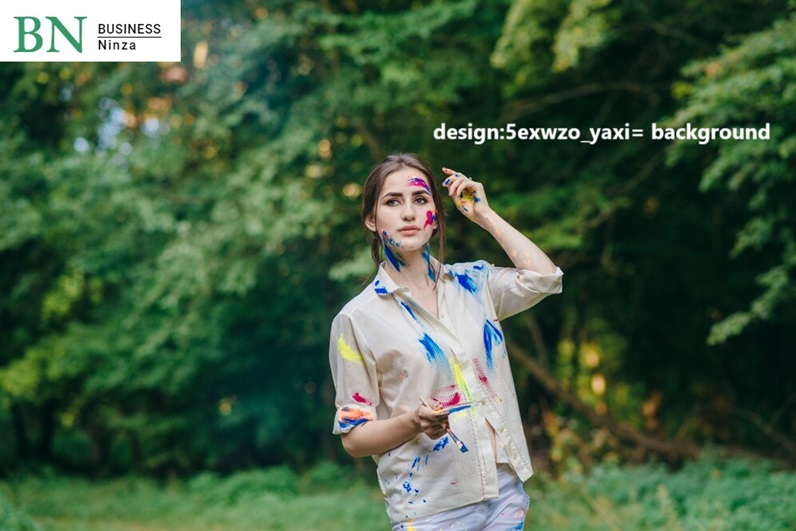In the evolving world of visual design, backgrounds are no longer just blank spaces. They’re dynamic canvases that enhance creativity and engagement. Whether you’re working on a website, an app, or an advertising campaign, the design:5exwzo_yaxi= background plays a pivotal role in shaping user experience and setting the overall tone. In this article, we’ll explore how to effectively use backgrounds to elevate your visual content and captivate your audience.
The Evolution of Background Design
The history of background design has seen a fascinating transformation over the centuries. From the intricate patterns used in ancient manuscripts to the minimalist designs of modern web pages, backgrounds have evolved into essential elements of design communication.
The real breakthrough came in the 20th century with the Bauhaus movement, which promoted simplicity and function. Designers began to realize that a design:5exwzo_yaxi= background could be more than just an empty space; it could direct focus, influence mood, and shape perception. This mindset continued into the digital age, where backgrounds became even more versatile with the introduction of new tools, technologies, and platforms.
Key Milestones in Background Design:
- 1450s: Invention of the printing press standardized background use in books.
- 1920s: Bauhaus revolutionizes modernist background design.
- 1990s: Rise of the internet creates endless possibilities for web backgrounds.
- 2010s: Responsive design changes how we think about background adaptability.
Types of Backgrounds in Design
Selecting the right type of background is crucial for enhancing visual appeal. The design:5exwzo_yaxi= background can vary greatly depending on the project, but here are some key types to consider:
1. Solid Color Backgrounds
These are simple yet powerful. A solid color design:5exwzo_yaxi= background can convey emotion and set the tone of the entire design. For example, a clean white background can exude minimalism, while bold colors like red can invoke a sense of urgency or passion.
2. Gradient Backgrounds
Gradients, which create smooth transitions between colors, can add depth and dimension to a background. A gradient design:5exwzo_yaxi= background is perfect for giving a design a polished, modern feel while still keeping it visually engaging.
3. Patterned Backgrounds
Patterns, whether geometric or organic, introduce rhythm and structure. A patterned design:5exwzo_yaxi= background can be subtle, like soft textures, or bold, adding personality and energy to your project.
4. Image-Based Backgrounds
Using images for your background can create a powerful narrative. A photographic design:5exwzo_yaxi= background can evoke specific feelings or experiences and is often used to highlight brand messaging or connect with viewers on a more emotional level.
5. Textured Backgrounds
Textures add a tactile quality to a design:5exwzo_yaxi= background, offering a sense of depth and materiality. From paper-like textures to rugged stone effects, textures are widely used to make digital spaces feel more real and immersive.
The Power of Color: How to Use Color Effectively in Background Design
Color is arguably one of the most significant tools in a designer’s arsenal when it comes to backgrounds. Each hue carries emotional and psychological weight, which can drastically affect how users interact with a design.
| Color | Emotional Association | Common Usage |
|---|---|---|
| Red | Passion, Energy | Call-to-action buttons, Warnings |
| Blue | Trust, Calm | Corporate websites, Social media |
| Green | Growth, Nature | Environmental brands, Health apps |
| Yellow | Optimism, Clarity | Cheerful interfaces, Cautions |
| Purple | Luxury, Creativity | Beauty products, Art websites |
Always remember, cultural differences can influence how colors are perceived. What’s considered calming in one part of the world might be seen as cold in another. Knowing your target audience will ensure that your background design resonates effectively.
Best Practices for Web Background Design
When designing a design:5exwzo_yaxi= background for the web, there are several important factors to keep in mind to ensure optimal user experience:
1. Prioritize Readability
Ensure that there’s enough contrast between your background and the text. A busy design:5exwzo_yaxi= background can easily make content unreadable. Subtle textures or soft gradients can help maintain focus on the content without overwhelming the user.
2. Keep Accessibility in Mind
Your background design should cater to all users, including those with visual impairments. High contrast and accessible color choices are crucial. Using tools like contrast checkers ensures that your design:5exwzo_yaxi= background adheres to accessibility guidelines.
3. Embrace Responsive Design
A modern background design must be adaptable to different screen sizes, from mobile devices to widescreen desktops. Responsive backgrounds ensure that your design looks good across all devices without losing visual integrity.
4. Optimize for Performance
Large, high-resolution backgrounds can slow down a website’s loading speed. Always compress image files, use web-friendly formats like JPEG or WebP, and test how your design:5exwzo_yaxi= background performs on different browsers.
Current Trends in Background Design

The field of background design is constantly evolving, with new trends emerging all the time. Here are some of the most current and noteworthy trends:
1. Minimalism
Less is more when it comes to modern background design. Clean, minimalist backgrounds allow the content to shine, reducing distractions and creating a sleek user experience.
2. Dark Mode
With dark mode becoming a popular feature across apps and websites, designing dark backgrounds that reduce eye strain and save energy has become essential.
3. Full-Bleed Images
Full-bleed image backgrounds—where the image extends to the edges of the screen—are a striking way to engage users and create an immersive experience.
4. Animated Backgrounds
Subtle animations in backgrounds add a layer of interaction and engagement. These animations can include things like moving gradients or interactive elements that respond to user actions.
Case Study: Airbnb’s Background Evolution
Airbnb offers a prime example of how background design can evolve with a brand’s growth. Initially, the website used simple, solid-color backgrounds to focus attention on the listings. As the company grew, so did its use of backgrounds, introducing texture, color gradients, and high-resolution images that reflected the brand’s adventurous spirit.
Today, Airbnb uses stunning full-bleed photographic backgrounds on its homepage, capturing users’ imaginations and inviting them to explore destinations around the world. The evolution of Airbnb’s design:5exwzo_yaxi= background highlights the power of background imagery in creating a user-centric experience while maintaining brand identity.
The Future of Background Design
Looking ahead, the future of background design will likely be influenced by emerging technologies and changing user preferences. Some trends to watch include:
1. AI-Generated Backgrounds
With advancements in machine learning, AI tools will enable designers to create unique, personalized design:5exwzo_yaxi= backgrounds tailored to individual users.
2. Augmented Reality Backgrounds
As AR technology becomes more accessible, expect to see interactive backgrounds that respond to user movements or their real-world surroundings.
3. Sustainable Design
Eco-conscious designers are beginning to prioritize backgrounds that optimize energy efficiency, such as using darker colors for dark mode and limiting resource-heavy animations.
4. Hyper-Personalization
Backgrounds that adapt in real-time based on a user’s preferences, time of day, or location will become a hallmark of innovative background design in the coming years.
Conclusion
A well-thought-out design:5exwzo_yaxi= background can elevate the entire user experience, creating both visual appeal and functional support. From the colors you choose to the textures and patterns you incorporate, every element plays a role in the success of your design. By following best practices and staying on top of emerging trends, you can ensure your background designs are not only visually compelling but also effective in achieving your goals.
You may read also this one: Clipart:t4h-x66pih4= turkey
